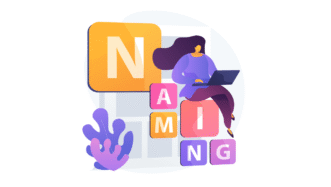LESSON OVERVIEW
The main objectives of this lesson are to:
- discuss scams and online safety;
- practise phrases to talk about scams;
- watch a video about a scam tactic;
With this lesson, students discuss online scams and clickbait, talk about prevention efforts and work on useful phrases for the topic (e.g. catch you off guard, keep you on your toes, fall for, etc.). They watch a video on a scam strategy, share their opinions and discuss scam protection tips. Students also talk about their online security habits.
WARM-UP AND VIDEO
This lesson begins with a warm-up. Students read clickbait messages ( e.g. Congratulations, you’re the lucky winner!, Your account has been suspended., etc.) and say where they can come across them (e.g. email, website ad, SMS, etc.). They also describe how they make them feel. Following that, students discuss questions about online scams and clickbait. Then, they complete phrases to talk about scams (e.g. catch you off guard, keep you on your toes, take you for a ride, etc.) with nouns. Afterwards, students explain what the phrases mean. Next, they talk about scams and prevention efforts. After that, students watch a video about a scam tactic. Before watching it, they answer simple questions (e.g. Can you speak English?). Students consider how the questions could be used to scam them. They then watch the video and describe the scam. Finally, students complete sentences about the scam in the video with their own ideas.
DISCUSSION
At this point, students work with more vocabulary. They choose the correct verbs to complete phrases to talk about scams (fall for, keep a low profile, stay vigilant, give yourself away) in tips for avoiding scams. Next, students come up with examples of things related to ways to detect and avoid deception (e.g. common lies people fall for). After that, they read the tips from the previous exercise again. Students discuss whether the tips are useful, share if they already use them, and think of one additional scam protection tip. Afterwards, they decide where they would place themselves on scales of online security habits (e.g. I answer calls from unknown numbers. – I ignore calls from unknown numbers.). Students also explain their answers and give examples. Then, they define which activity on each scale poses security risks and say what the potential consequences are.
HOMEWORK/REVISION
This lesson plan also includes an additional task that you can use as homework or revision. In the task, students read the beginnings of scam stories, imagine what happened, and suggest how the person could avoid similar situations using the target phrases from the lesson. The task is available in the teacher’s version of the worksheet. You can print it and hand it out to your students. It’s also included in the e-lesson plan.
WORKSHEETS
Subscribe to unlock these and many other Standalone lesson with the Premium plan
Subscribe












The video is not available on ESL. Had to watch on YouTube
Thank you for your feedback! Some content creators on YouTube restrict their videos from being viewed on other platforms, which is why the video isn’t available directly on ESL Brains. To address this, we include an image with a clickable link in every e-lesson plan, making it easy for teachers to access the video directly on YouTube. This restriction is due to the creator’s preferences and not an issue on our end. However, if a video is particularly engaging and valuable, we believe it’s worth building a lesson around it despite the platform limitation.